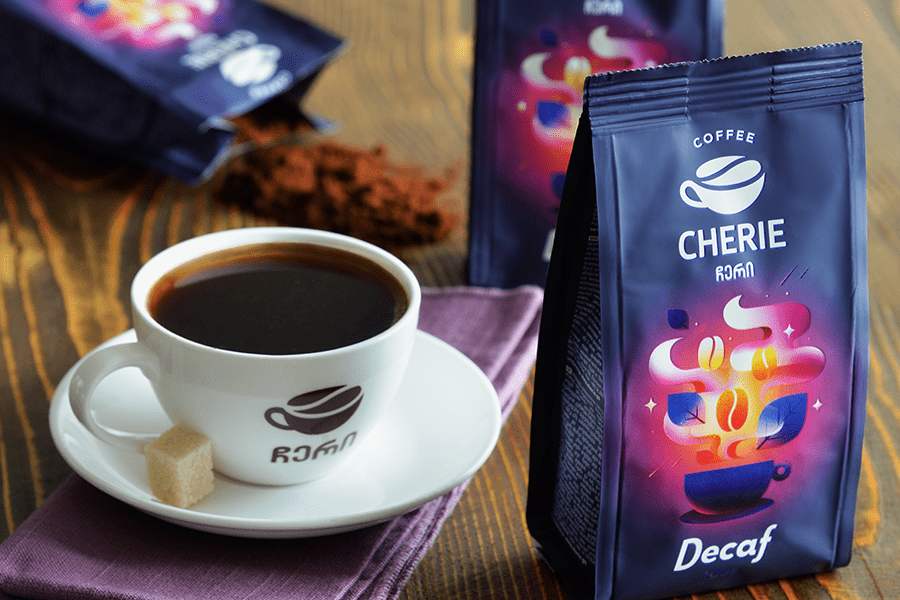Ground Coffee
Cherie Decaf
Cherie Decaf - 100 % natural Arabica, roasted and ground, decaffeinated coffee. Medium roasting.
The Caffeine is naturally contained in cocoa beans, tea and coffee. It is also a component in soft drinks and pharmacological preparations.
But some people, especially – nursing mothers, pregnant women, people with cardiovascular disease, also the older people, choose to consume decaffeinated coffee, tea or soft drinks.
Coffee: Decaffeination of the green coffee beans takes place prior to their roasting. Normally, Arabica contains 1-1.5% caffeine and Robusta – approximately 2-2.5%.
There are various methods to decaffeinate the coffee. In Europe, a maximum of 0.1% caffeine may be presented in the coffee in order to name it the decaffeinated coffee.
The caffeine is extracted from the swollen green coffee by using dichloromethane. Due to a concentration difference, the caffeine moves from the bean’s cellular structure into the solvent. This Mixture is continuously removed from the extraction vessel.
This process is being happening in several stages.
The first stage: pre-wetting and pre-moisturizing
At this stage of preparation, the silver skins are loosened by the steam treatment and are removed from the beans by the airflow. The cellular structure is now open through the treatment done by the water and steam.
The second stage: Extraction
Extraction is the main stage. The caffeine is slowly removed from the warm and wet green coffee beans by adding the highly selective extraction solvent in the extraction vessel. The solvent binds the caffeine together and after the saturation, this mixture is removed from the vessel. Depending on the original caffeine content, this process is repeated until the caffeine level is below the required limit. After the extraction, the remaining solvent is removed from the beans by slight flow pressure.
The third stage: Drying
Under the warm air, decaffeinated coffee is drying until the moisture content reaches 10-12% (like normal green coffee beans have). Finally, the beans are cooled, polished and repacked into bags.
After the completion of these three stages, decaffeinated coffee beans are roasted, grinded and packed again.








